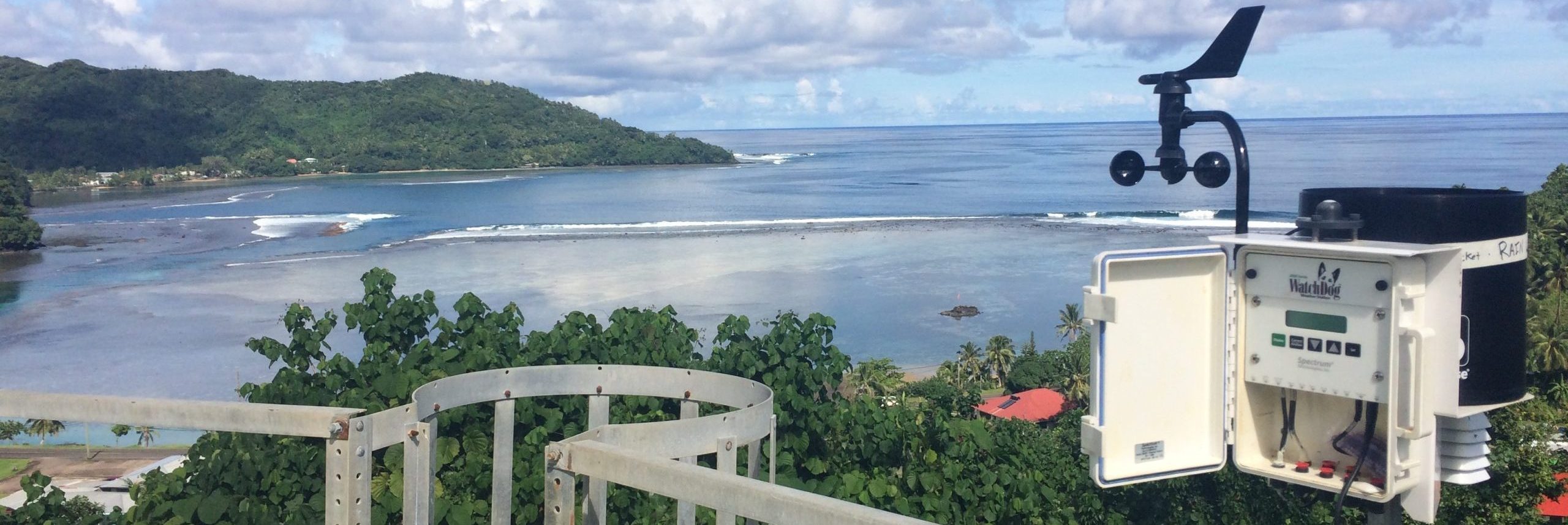
Top Reports, Publications, and Datasets
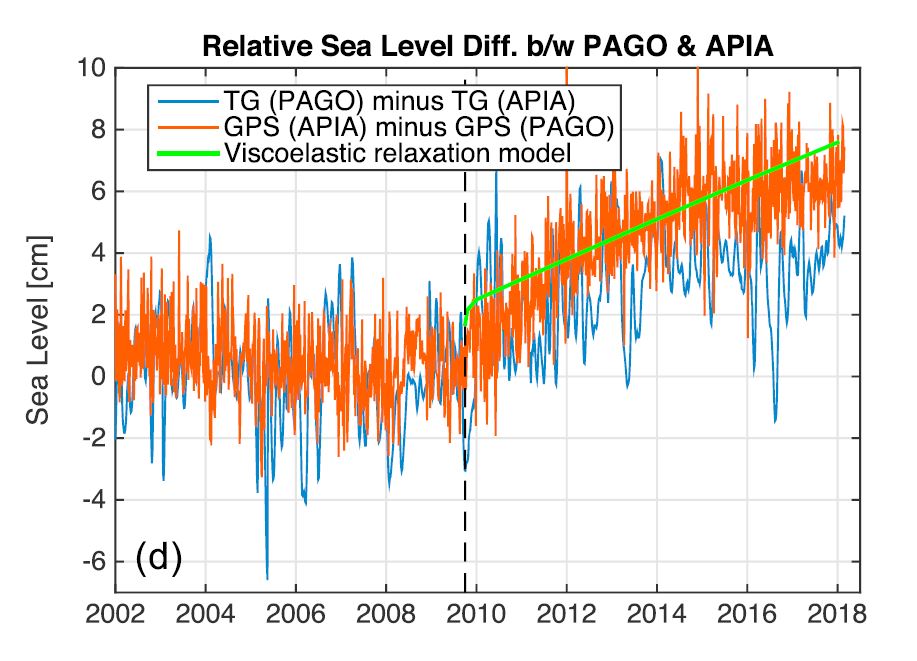
Han et al., 2019, Sea Level Rise in the Samoan Islands Escalated by Viscoelastic Relaxation After the 2009 Samoa‐Tonga Earthquake
The Samoan islands have experienced a gradual sea level rise of 2-3 mm/year, which significantly increased after a 2009 earthquake. Analysis of gravity and GPS data showed increased gravity and ongoing island subsidence. American Samoa experienced faster postseismic subsidence and sea level rise compared to Samoa. A viscoelastic model predicts a continued sea level rise of 30-40 cm, exacerbating coastal flooding.
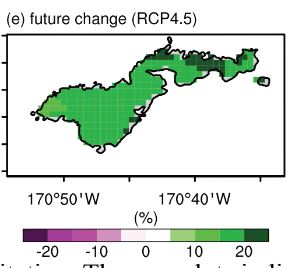
21st Century High-Resolution Climate Projections for Guam and American Samoa
A high-resolution regional atmospheric model was used to downscale global climate model results and project future changes in climate variables over Guam and American Samoa. The study focused on analyzing tropical cyclone activity and downscaling the model to achieve an unprecedented 0.8-km horizontal resolution, providing detailed simulations of present and projected climate changes for the region.
Report, PIRCA Summary Page, USGS Download and Metadata Page
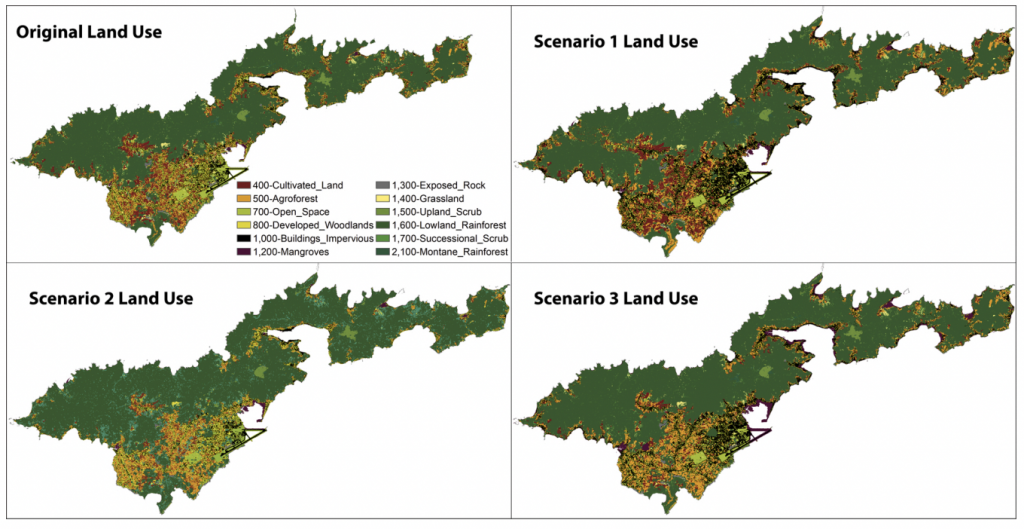
Shuler et al., 2021, A participatory approach to assessing groundwater recharge under future climate and land-cover scenarios, Tutuila, American Samoa
This study examines the impact of changing climates on global water resources, focusing on the Island of Tutuila, American Samoa. Using the SWB2 model, researchers estimated high-resolution groundwater recharge and predicted future recharge based on climate and land-cover scenarios. They found that 57% of Tutuila’s rainfall becomes groundwater recharge, with potential increases of 8% or 14% depending on emissions. Land-cover had a lesser effect on hydrologic change, but increased impervious surfaces negatively impacted recharge. The study is an active open-source project on GitHub, providing transparency and involving stakeholders. It offers insights into how human activities affect the sustainability of essential resources in the South Pacific Convergence Zone.
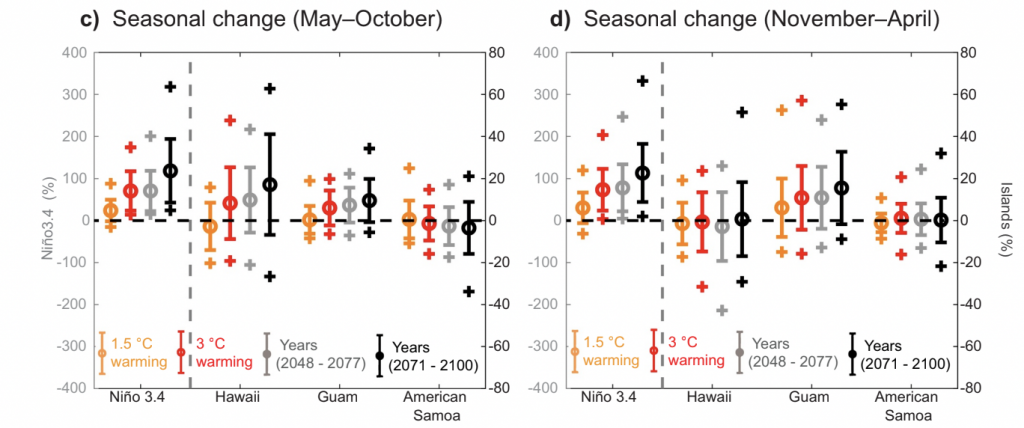
Dhage & Widlansky, 2022, Assessment of 21st Century Changing Sea Surface Temperature, Rainfall, and Sea Surface Height Patterns in the Tropical Pacific Islands Using CMIP6 Greenhouse Warming Projections
This study examines projected climate changes in the tropical Pacific using advanced models. It focuses on rainfall, sea surface temperature, and sea surface height in regions like Hawaii, Guam, and American Samoa. The models indicate ongoing warming in the tropical Pacific, with the Earth’s surface and the region already experiencing over 0.5°C of warming. The study quantifies climate changes for specific warming amounts, such as 1.5°C or 3°C above preindustrial levels. While the timing of reaching those thresholds remains uncertain, there is consensus among models on increased rainfall near the equator and around Guam. The projected increase in equatorial rainfall is tied to the region’s faster warming and suggests potential climate variability that will affect most tropical Pacific Islands.
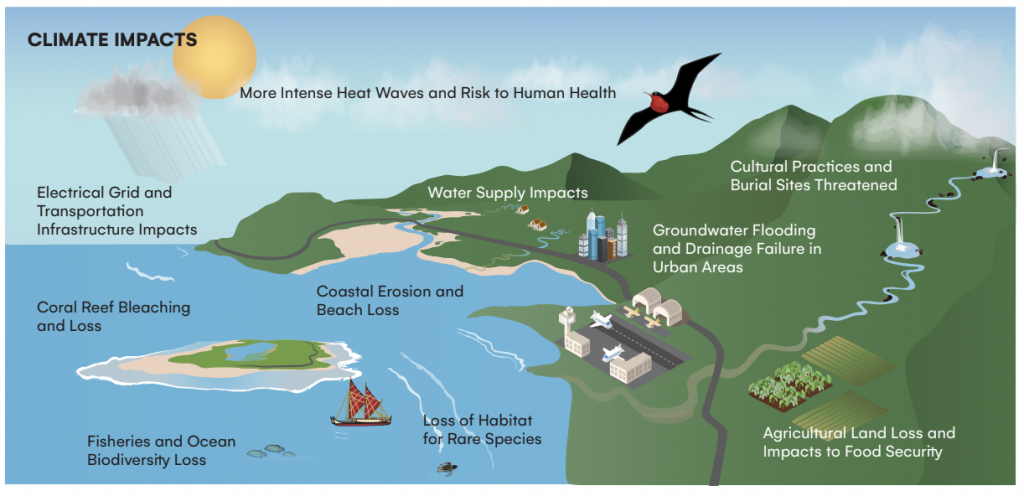
Climate Change in American Samoa: Indicators and Considerations for Key
Sectors
Climate Change in American Samoa: Indicators and Considerations for Key Sectors” is a report created by the Pacific Islands Regional Climate Assessment (PIRCA). It is part of a series of reports that assess the knowledge about climate change indicators, impacts, and adaptive capacity in the US-Affiliated Pacific Islands (USAPI) and the Hawaiian archipelago. PIRCA brings together various stakeholders, including government agencies, NGOs, academia, businesses, and community groups, to inform and prioritize their actions in response to climate change.

Corlew, 2015, Disaster and Climate Change Preparedness in American Sāmoa
This project aims to enhance understanding of American Samoa’s vulnerability to natural hazards and climate change. The region faces risks such as drought, wildfires, storms, flooding, mudslides, erosion, tsunamis, and earthquakes. By exploring the community’s experiences through an online survey, interviews with community members and professionals, and a preparedness workshop in Pago Pago, the project seeks to assist American Samoa citizens and professionals in better preparing for future events. Disaster preparedness measures can also serve as preparations for climate change impacts, ensuring resilience in the face of both natural and human-made disasters.


